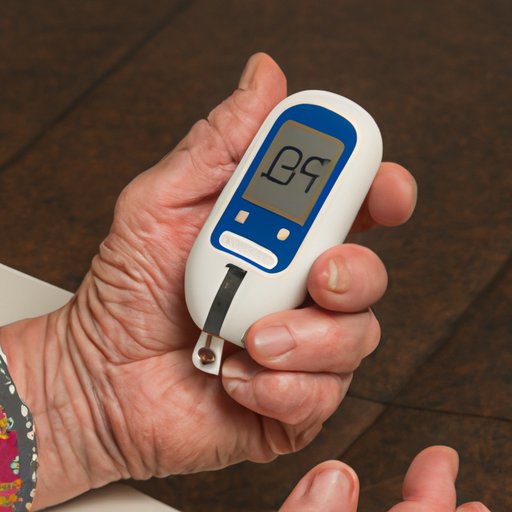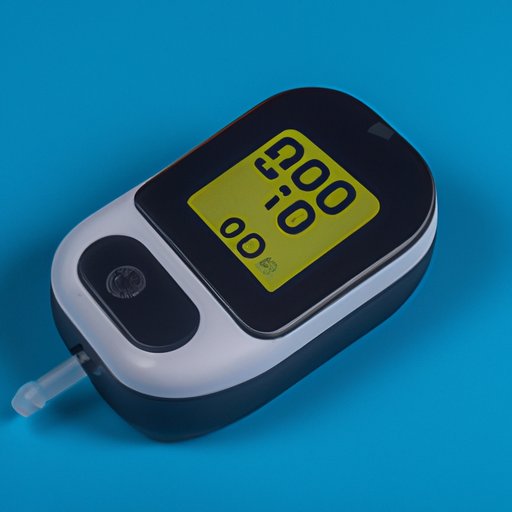Introduction
An oximeter is a small, lightweight medical device used to measure the oxygen saturation level of the blood. It can be used to detect hypoxemia, which is a condition in which the body does not have enough oxygen to meet its needs. The purpose of an oximeter is to provide an accurate reading of the amount of oxygen that is being carried by red blood cells in the bloodstream.

Exploring the Science Behind Oximetry – How It Works
Pulse oximetry is a non-invasive procedure that measures the oxygen saturation level of the blood. It works by shining two different wavelengths of light through the skin and measuring the amount of light absorbed. This information is then used to calculate the oxygen saturation level of the blood.
The oximeter uses two sensors, one on each side of the finger. The first sensor emits light, which is then absorbed by the hemoglobin in the blood. The second sensor measures the amount of light that is reflected back from the blood. The difference between the amount of light emitted and the amount of light reflected is used to calculate the oxygen saturation level in the blood.
A Guide to Understanding the Basics of an Oximeter
An oximeter is typically composed of three main components: the display screen, the sensors, and the power source. The display screen shows the oxygen saturation level of the blood and other vital signs such as pulse rate and respiration rate. The sensors are placed on either side of the finger and emit the light needed to measure the oxygen saturation level of the blood. The power source is usually a battery or a wall outlet.
Oximeters come in a variety of shapes and sizes. Some are designed for use on the finger, while others are designed for use on the ear or forehead. Some oximeters also come with additional features, such as alarms and memory functions, which allow users to store readings and track changes over time.

Using an Oximeter to Monitor Blood Oxygen Levels
When using an oximeter to monitor your blood oxygen levels, it is important to read and interpret the results correctly. The results are usually displayed as a number between 0% and 100%. A normal oxygen saturation level for healthy adults is 95% or higher. If your oxygen saturation level is below 90%, you may need to seek medical attention.
The benefits of using an oximeter include the ability to quickly and easily monitor your oxygen saturation level at home. This allows you to stay informed about your health and make necessary lifestyle changes to improve your oxygen saturation level. An oximeter can also be used to detect early signs of hypoxemia, which can help prevent more serious health complications.

An Overview of Oximetry: What It Is and How It Helps
Oximetry has a wide range of applications in both medical and non-medical settings. In the medical field, oximetry is often used to diagnose and treat conditions such as asthma, chronic obstructive pulmonary disease (COPD), and sleep apnea. It can also be used to monitor patients during surgery or to assess the effectiveness of treatments.
The accuracy of oximeter readings depends on several factors, including the type of oximeter used, the position of the patient, and the quality of the signal. To ensure accurate readings, it is important to follow the manufacturer’s instructions when using an oximeter.
Conclusion
In summary, an oximeter is a small, lightweight medical device used to measure the oxygen saturation level of the blood. It works by shining two different wavelengths of light through the skin and measuring the amount of light absorbed. An oximeter is composed of three main components: the display screen, the sensors, and the power source. When using an oximeter to monitor your blood oxygen levels, it is important to read and interpret the results correctly. Oximetry has a wide range of applications in both medical and non-medical settings, and the accuracy of readings depends on several factors.
Overall, oximetry is a simple yet effective tool for monitoring blood oxygen levels. By understanding how an oximeter works and the benefits of using one, you can stay informed about your health and make necessary lifestyle changes to improve your oxygen saturation level.
(Note: Is this article not meeting your expectations? Do you have knowledge or insights to share? Unlock new opportunities and expand your reach by joining our authors team. Click Registration to join us and share your expertise with our readers.)
